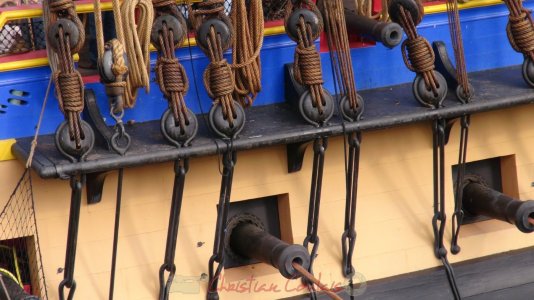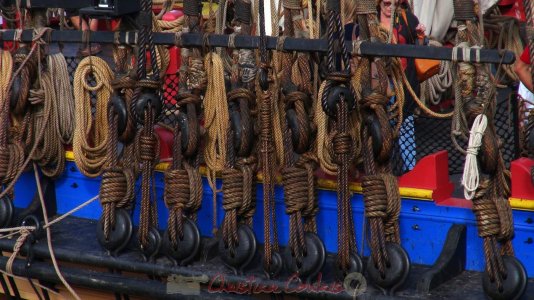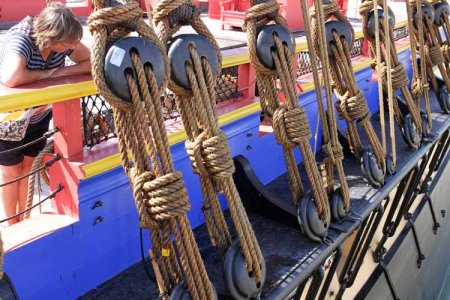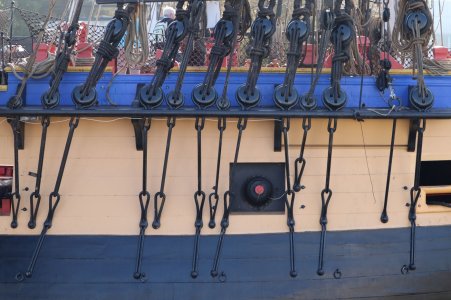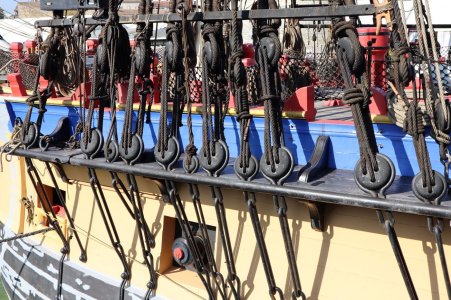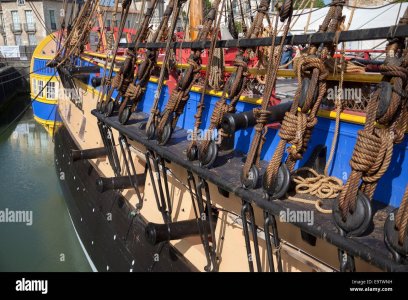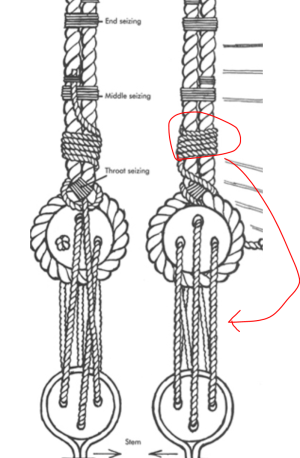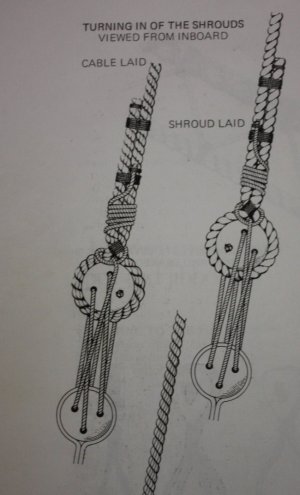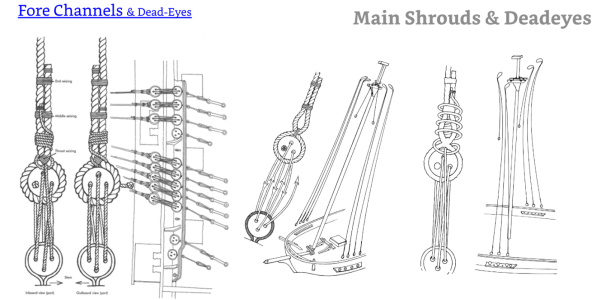- Joined
- Jul 19, 2023
- Messages
- 20
- Points
- 8

I'm a bit confused by the shroud lanyards in this photo (I've examined a few photos of these from multiple angles, it's a bit too dense for my untrained eye to make sense of). I'm not sure if the green and yellow highlighted ropes are all part of the same length, or of the green is the remaining slack from the lanyards secured at the base of the shroud, and the yellow is additional (separate) rope lashed around the lanyards between the deadeyes.
can anyone either:
A: suss out how these lanyards are secured based on the photo attached
or
B: direct me to a book or manual with various methods (I'm aware there are many)
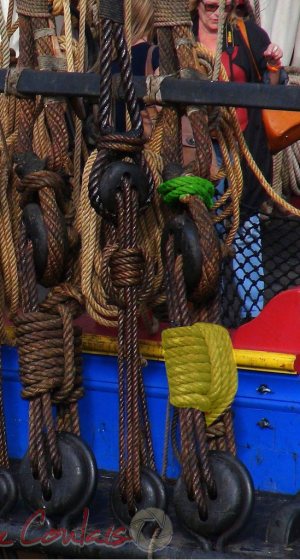
can anyone either:
A: suss out how these lanyards are secured based on the photo attached
or
B: direct me to a book or manual with various methods (I'm aware there are many)



